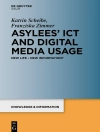This book highlights how, in principle, digital technologies present an opportunity to reduce social disparities, tackle social exclusion, enhance social and civil rights, and promote equity. However, to achieve these goals, it is necessary to promote digital equity and connect the digital underclass. The book focuses on how the advent of technologies may become a barrier to social mobility and how, by concentrating resources and wealth in few hands, the digital revolution is giving rise to the digital oligarchy, further penalizing the digital underclass. Socially-disadvantaged people, living at the margins of digital society, are penalized both in terms of accessing-using-benefits (three levels of digital divide) but also in understanding-programming-treatment of new digital technologies (three levels of algorithms divide). The advent and implementation of tools that rely on algorithms to make decisions has further penalized specific social categories by normalizing inequalities inthe name of efficiency and rationalization.
Inhoudsopgave
1. Theorizing Inequalities.- 2. Old digital inequalities: Digital Divide.- 3. New digital Inequalities: Algorithms divide.- 4. Connecting the digital Underclass.- 5. Conclusions.
Over de auteur
Massimo Ragnedda is Senior Lecturer at Northumbria University, UK, where he conducts research on the digital divide and social media. He is co-vice chair of the Digital Divide Working Group (IAMCR) and co-convenor of Northumbria Internet and Society Research Group. He has authored twelve books and numerous articles in English, Spanish, Italian, Portuguese and Russian.












